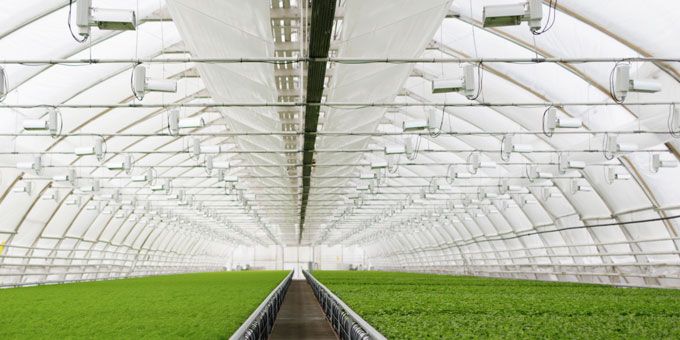I’d like to talk about the most important part of VPD namely, how it impacts your production and how can you manipulate it to increase your sales. Notice I didn’t say increase production, because if you do things correctly it’s not the pounds of harvest the matters.
 Control VPD and Rule the Greenhouse
Control VPD and Rule the Greenhouse

Carl Silverberg, Sr. VP Outreach & Public Affairs | iUNU
Let’s face it. When you hear the initials VPD you’re usually not jumping for joy at the thought of another dry discussion about humidity. Don’t worry, this isn’t going to be one of those articles.
Instead, I’d like to talk about the most important part of VPD namely, how it impacts your production and how can you manipulate it to increase your sales. Notice I didn’t say increase production, because if you do things correctly it’s not the pounds of harvest the matters. We all have the same grower tools. In the horticulture world, it’s all about the quality of the crop.
If you can achieve the same level of quality with 100 pounds and it takes one of your competitors 150 pounds to produce the same level, that’s a much better ROI for you and much more attractive to your customer. Plus, your competitor’s production costs are 50% higher than yours. They either have to charge more than you do or be prepared to lose a lot of money to keep their market share. Our goal with this discussion is a happy customer and a happy grower.
Jim Brown, a horticulturist with Crop King offers some cautionary advice. “My experience has been that one of the most dangerous impacts on plants is rapid change. If you have a high VPD and then you suddenly change that it causes cell damage. Cell damage creates crop damage. The key is to make the adjustments gradually enough that it benefits the plant.” In short, don’t overreact.
We’re all familiar with VPD and we all know how to control it. Are you sure? If your feet are cold, putting on another layer of socks isn’t going to warm up your ears. If the sensors in your greenhouse data collection system are set at the middle or closer to the roots of the plants, you’re measuring VPD but you’re not measuring it where it’s most important. Your greenhouse automation sensors need to be properly sited.
The critical area for VPD is the boundary layer of the canopy because that’s where all the action is, not in the middle of the plant and certainly not near the roots. VPD levels may be perfect in those two places but that’s not going to get you the same optimal yield that focusing on the boundary layer of the canopy will achieve.
Here’s why. Most growers want to focus on the boundary layer using environmental as well as cultivation techniques to control both the growth style as well as the quality of the plant. For the sake of this discussion, let’s agree to consider the boundary layer to be the immediate zone around the leaves of the canopy. As we all learned in Horticulture 101, the top side controls chlorophyll production and the bottom (stomata) controls the exchange and absorption of gases, the most important of which is CO2.
If you focus on the boundary layer when you’re pruning, you can open the canopy to provide the optimal conditions for growth. VPD works best when the canopy is working to its fullest potential and you also give the boundary layer the right conditions. Nathan Fumia, principal of Higher Plants Consulting in Hawaii offered another perspective.
“Sure, you can manipulate VPD to increase production, but there’s another overlooked benefit, which is decreased costs. By controlling VPD, you can control your fertilizer rates and therefore you have control over one of your main costs.”
In wrapping up these ideas we have some great advice. First, don’t instantly react to a low or high VPD or you’ll do more damage than the poor levels are doing. Second, focus on the higher quality and you can achieve even better sales numbers. Third, check your sensor locations so your data input is coming from where you want it. Lastly, stay focused on the canopy; that’s your money maker.
The content & opinions in this article are the author’s and do not necessarily represent the views of AgriTechTomorrow
Comments (0)
This post does not have any comments. Be the first to leave a comment below.
Featured Product

